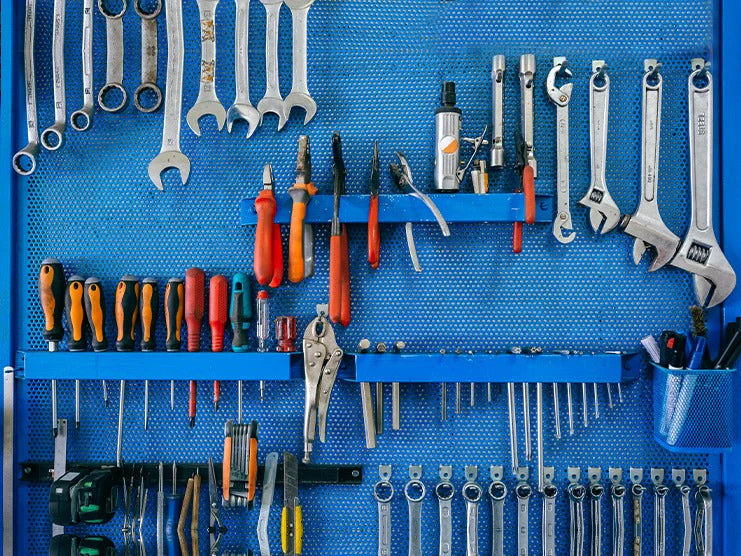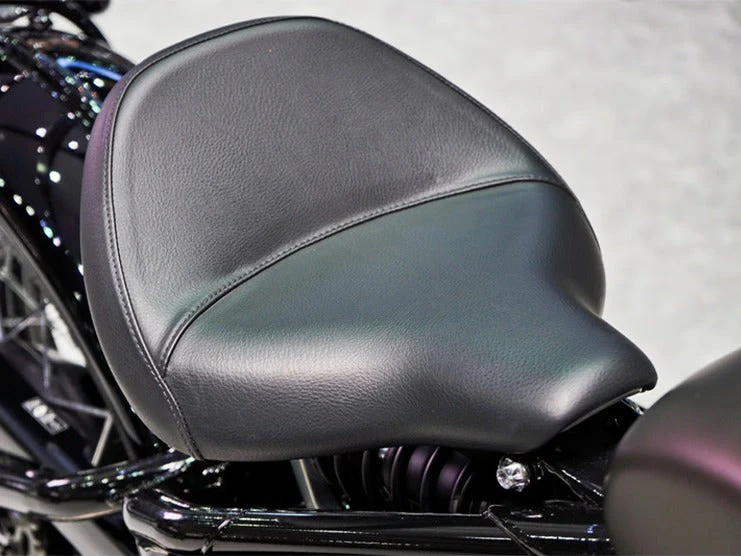Table of Content
Responsible motorcycle riders always remember to conduct motorcycle maintenance. To maintain your motorcycle, you must have multiple tools to make repairs. Taking care of your motorcycle also ensures a good riding experience by improving performance, durability, and longevity.
Investing in good maintenance tools will help you keep your bike functioning for a long time. However, you only need to buy a few essential tools. After learning how to use them first, you can buy more advanced electrical tools. It is always good to have a collection of maintenance tools handy to help fix your motorcycle over the years.
This article covers how to conduct motorcycle maintenance, what tools you need, and how to use them.
1. Motorcycle Maintenance
To take proper care of your motorcycle, there are tasks you must perform daily. You do not need to go to a mechanic to perform these simple tasks. All you need is a workplace like a garage and the right tools. If you often ride daily, you must learn how to use maintenance tools.
2. How to Conduct Motorcycle Maintenance
To conduct motorcycle maintenance, you must complete the following tasks:
- Check the tire pressure
- Change the oil regularly
- Change any motorcycle fluids if necessary
- Check and adjust the chain
- Replace the chain if necessary
3. Tools Required for Motorcycle Maintenance
To keep your motorcycle in good condition for as long as possible, you must acquire good-quality tools. Here is a complete list of required motorcycle maintenance tools:
3.1 Tire Pressure Gauge

Tires bear the weight of your motorcycle and are constantly in contact with the road. To stay safe on the road, the tire pressure must be high enough to ensure stable handling.
Many tire pressure gauges are available on the market, ranging from affordable and simple tire pressure gauges to expensive and high-quality digital tire pressure gauges.
Always choose the tire pressure gauge that is easiest to use so you can check the tire pressure daily.
3.2 Tire Inflator or Compressor

If the tire pressure is low, you will need a tire inflator or compressor to help reinflate the tire. Tire inflators are usually cheaper than tire compressors. However, compressors inflate tires much faster and are more efficient than inflators.
3.3 Socket Sets

Socket sets are available at multiple stores and come at reasonable prices. There are two types of sockets in each set: short sockets and deep sockets. Short sockets make it easier to access areas with little overhead clearance. Deep sockets help make it easier to work on hard-to-reach places deeper inside a motorcycle.
3.4 Screwdrivers

Screwdrivers are long and thin tools with differently-shaped heads to help make it easier to loosen and tighten screws. When buying a set of screwdrivers, make sure they include the following:
- Must have Phillips- and flat-head screwdrivers
- Must have multiple screwdrivers with short and long shafts and handles
- Must have screwdrivers with different tip sizes, including magnetic tips
3.5 Spanners

Spanners help unscrew and tighten nuts and bolts if a socket cannot fit. Spanners come in several sizes, but all have a ring opening at the bottom and a contoured head. These kinds of spanners are also known as combination spanners.
3.6 Standard Fasteners

Every motorcycle can come with one or both standard fasteners: SAE (Society of Automotive Engineers) or metric. SAE fasteners are measured by their threads per inch, while metric fasteners are measured by the distance between each thread. Make sure you have spare fasteners if you need to replace any damaged ones on your motorcycle.
3.7 Allen Keys

Allen keys, or hex keys, are used to loosen and tighten any hexagonal nuts, bolts, or screws. Allen keys can come in different sizes, so make sure they fit the size of your specific model’s parts.
3.8 Wrench Sets

A wrench is used to loosen and tighten fasteners. Wrenches are usually made of steel alloy reinforced with chrome. Types of wrenches include open-end, basin, combination, torque, Allen, box-end, socket, adjustable, and ratchet wrenches. Adjustable and torque wrenches are the ones most often used for motorcycle maintenance and repair.
3.9 Pliers

Pliers help grab wiring or hold the tire bead while mounting or removing tires. Always choose pliers with rubber handles to ensure a strong grip, even with greasy hands. There are two types of pliers with different nose sizes: long-nose pliers and flat-nose pliers. Long-nose pliers make it easier to access hard-to-reach places, while flat-nose pliers offer better grip.
3.10 Oil Catch Pan

Oil catch pans help keep oil from leaking onto the floor when performing an oil change. Check the size of the oil catch pan before buying it. Make sure there is enough clearance between the motorcycle and the oil catch pan to reach for and detach the drain plug. The oil catch pan must have enough capacity to hold all the oil drained from the motorcycle.
3.11 Motorcycle Stand

Most motorcycles already have a side stand that helps keep them upright. However, you may want to get an aftermarket stand if you think your motorcycle would benefit from extra support. A taller motorcycle stand may help reduce pressure on the tires. Make sure the height of the motorcycle stand is correct and can be installed on your motorcycle without causing damage.
3.12 Heavy-Duty Nitrile Gloves

Most mechanics use leather or cotton gloves to protect their hands and nails from oil and grease. Nitrile or leather gloves offer the best protection for your hands from being covered by oil or grease that can cause skin infections.
3.13 Chain Breaker Tool

Chain breakers are available in kits at various prices on the market. To repair a chain, it is necessary to break it before mending it using the chain breaker.
3.14 Hammer

If you need to budge a heavy or hard part during maintenance, you may need a small hammer. Hammers can also loosen stuck nuts or screws that cannot be removed by hand.
3.15 Rubber Mallet

More fragile motorcycle parts need to be knocked into place by a rubber mallet instead of a metal hammer. The rubber heads have sufficient heft to move the parts but are soft enough to avoid causing damage.
3.16 Chain Lube

Chain lube is a lubricant that should be applied to the chain every 400-700 miles. It helps reduce friction, improves the chain’s efficiency, prevents damage, and increases lifespan. Motorcycles capable of off-roading need chain lube the most often.
3.17 Smart Battery Charger
Motorcycle batteries need to be recharged every once in a while. If your motorcycle is left unused for several days, its voltage may become reduced. A smart battery charger will help restore the battery’s voltage to its optimal level.
When the battery voltage reaches an optimal level, the smart battery charger shifts to float mode to ensure the voltage does not exceed its limit. The two types of motorcycle batteries are lead-acid and lithium-ion batteries. Make sure the smart battery charger is compatible with the right type of battery.
3.18 Multimeter

Multimeters are used to check the voltage level. Every motorcycle’s battery must be at a specific voltage. Otherwise, exceeding the voltage level will cause electrical shorts that might result in troubleshooting. To check the voltage level, you need at least a small and basic multimeter.
3.19 Axle Tool
An axle tool has several hex keys to help adjust or remove the front axle. The hex keys come in different standard sizes yet are all fitted on the same body.
3.20 Brake Bleeder
Brake bleeders help drain excess fluids to remove any bubbles in the hydraulic brake system and restore the operation of the brakes.
3.21 Zip Ties

Zip ties are thin nylon straps that can be wrapped around and secured with a locking mechanism. They can help connect parts, fasten the brakes in place, support the rim of damaged wheels, and improve traction on icy roads.
3.22 Electrical Tape
The electrical tape is thick and highly adhesive, suited for wrapping around exposed or frayed cables or wiring to provide insulation and ensure a continuous electrical current travels when your motorcycle’s battery is active.
3.23 Fuses
A fuse is a protective cover that keeps your motorcycle’s electrical system from short-circuiting or overloading due to excess power. It is best to have an extra fuse in case the one currently installed on your motorcycle suddenly fails.
4. FAQs
4.1 Why is motorcycle maintenance important?
Answer: Motorcycle maintenance is important because it helps keep your vehicle in good condition. Taking proper care of your motorcycle will extend its lifespan, improve durability, and increase engine efficiency.
4.2 When should motorcycle oil be changed?
Answer: It is recommended you change your motorcycle’s oil every year or after every 5,000 miles. Regularly changing the oil is part of routine maintenance and will help extend your motorcycle’s lifespan.
4.3 How should you conduct motorcycle maintenance after every ride?
Answer: Wipe down your motorcycle’s frame after every ride to remove dust and debris. Then wipe the chain and lubricate it at least once or twice per week.
5. Final Words
Most motorcyclists keep the tools needed to maintain their motorcycles in their garages. If your motorcycle suffers mechanical issues, you can try to fix them yourself instead of going to a mechanic. Most maintenance tools are basic but easy to use, helping ensure your motorcycle operates efficiently.












Leave a comment
All comments are moderated before being published.
This site is protected by hCaptcha and the hCaptcha Privacy Policy and Terms of Service apply.